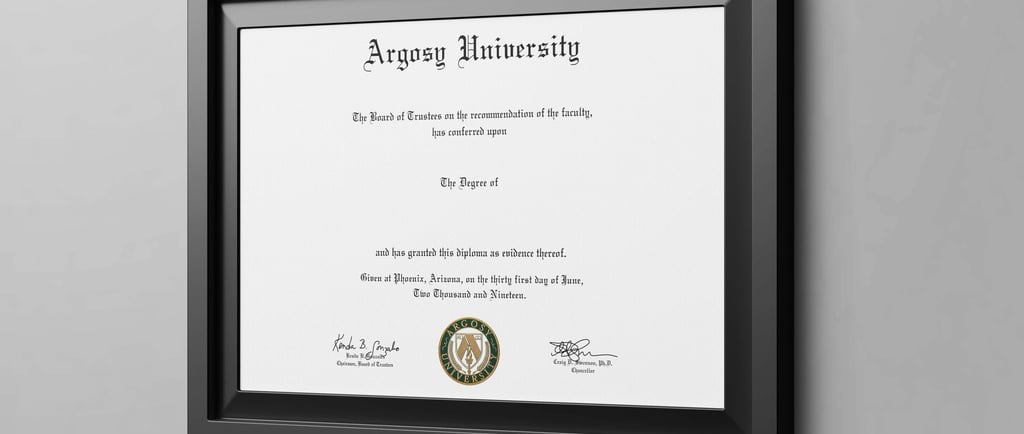How to Identify Fake Diploma Certificates: A Complete Guide
In today's competitive world, educational qualifications often play a crucial role in career advancement. Unfortunately, this has led to a rise in fake diplomas and degree fraud. Diploma mills, counterfeit certificates, and altered documents make it easier for individuals to misrepresent their academic achievements. Checking academic credentials is essential for employers, recruiters, and institutions. It ensures legal compliance, upholds professional standards, and protects the organization from financial loss and damage to its reputation. Verifying qualifications helps avoid hiring unqualified candidates and maintains trust in your team and processes. This guide shows how to identify fake diploma certificates. It covers checking physical details, using online verification tools, and consulting professional authentication services. By following these steps, you can confidently verify a diploma’s authenticity and protect yourself or your organization from potential fraud.


Understand Common Types of Fake Diplomas
Before verifying a diploma, it's essential to understand the types of fakes you might encounter:
Counterfeit Printed Certificates: Fake diplomas that copy real universities but aren't from legitimate schools. They look professional initially, but fail when you check details, seals, accreditation, or official records.
Altered Legitimate Diplomas: These authentic diplomas were altered after the issue, and the recipients' names were changed. They look real and are hard to detect without comparing them to official records or contacting the school.
Diplomas from Unaccredited Institutions: Degrees from diploma mills or unrecognized institutions may look real, but lack legal and academic value. Employers and universities generally do not accept them as valid qualifications or professional credentials.
Recognizing the source and type of fraud is the first step in protecting your organization from hiring based on false credentials.
Examine Certificate Design
The physical design of a diploma can reveal important clues about authenticity:
Seals and Embossing: Most real diplomas have embossed lettering, foil stamps, or gold seals. When examined closely, these raised or metallic features are complex to copy and confirm a document's authenticity.
Watermarks and Holograms: Holding the certificate to the light should reveal a watermark or hologram unique to the institution. Fake certificates often lack these features or attempt to imitate them poorly.
Signatures: Official diplomas include handwritten signatures in ink from university officials. Printed or uniform signatures are a strong red flag.
Paper Quality and Fonts: Genuine diplomas printed on high-quality paper use consistent fonts. Poor-quality printing, blurry text, or inconsistent fonts may indicate a counterfeit.
Design Consistency: Logos, borders, and official wording should match those used in authentic diplomas issued by the institution.
Employers should keep reference examples from legitimate universities for comparison.
Scrutinize the Language and Academic Honors
Language and terminology on a diploma can indicate whether it is authentic:
Correct Use of Honors: On U.S. diplomas, honors are usually written as cum laude, magna cum laude, or summa cum laude. In contrast, U.K. diplomas are typically used with honours. Using the wrong terms or mixing styles may indicate a fake diploma.
University Names: Pay attention to the exact name of the institution. Even small differences, such as writing Sheffield University instead of The University of Sheffield, can be a red flag.
Latin Phrases: While once common, many U.K. universities stopped issuing Latin diplomas over a decade ago. Seeing Latin text may signal a counterfeit document.
Spelling and Grammar Errors: Authentic diplomas rarely contain typos, inconsistent capitalization, or grammatical errors. Mistakes in these areas can indicate a fake document.
Verify University and Institution Details
Confirming the legitimacy of the issuing institution is critical:
Accreditation: Check if the university is officially recognized by the relevant accrediting body in its country. Degrees from unaccredited institutions hold little value.
Address to ensure it exists. Many diploma mills list fictitious locations or P.O. boxes.
Domain Authenticity: Official university emails and websites use the correct domains; for instance, a legitimate university might use “@harvard.edu,” not “@harvarduniversity.com.”
This is particularly important for foreign degrees, as diploma mills often target international students with convincing but fraudulent documents.
Check Supporting Documents
Diplomas rarely exist in isolation. Supporting documents can provide additional clues about authenticity:
Transcripts: Verify that course names, grades, and dates align with the diploma. Inconsistencies can indicate tampering.
Recommendation Letters: Authentic letters should come from real faculty or administrators with official contact information.
Academic Records: Look for irregularities such as missing semesters, unusual course sequences, or grades that don't align with the institution's grading system. Comparing these documents with the diploma can help uncover subtle signs of fraud that might not be immediately obvious.
Digital Verification Tools
Advances in technology have made diploma verification faster and more reliable:
Online Verification Portals: Many universities provide portals to confirm diploma authentication. Some institutions issue diplomas with QR codes or electronic certificates that link to secure online records.
Blockchain Certificates: Universities increasingly use blockchain to secure diplomas, making them tamper-proof and easy to verify.
Digital verification is faster and more accurate than manual checks, especially for remote or international hires.
Consult Professional Verification Services
When in doubt, professional degree verification services offer an added layer of security:
Expert Authentication: These services confirm the authenticity of diplomas and transcripts.
Foreign Qualifications: These services verify degrees from overseas schools, which may have different standards or limited online checks, helping. They help hire qualified candidates and avoid fake credentials.
Legal and Compliance Support: Professional verification helps employers ensure candidates’ qualifications are accurate, reducing the risk of hiring unqualified staff and avoiding potential regulatory issues.
Trusted services offer background checks and diploma verification, providing employers with a comprehensive solution to confirm candidates’ qualifications and hire genuinely qualified professionals.
Legal and Compliance Considerations
Employers have both ethical and legal responsibilities when verifying qualifications:
Hiring Risks: Employing someone with a fake diploma can lead to financial, legal, and reputational damage.
Reporting Fraud: Suspected cases should be reported to national authorities or educational regulators. In the U.K., for example, organizations can contact Action Fraud.
Confidentiality: Verification should be conducted carefully to protect privacy and avoid defamation. To stay compliant with legal and regulatory requirements, maintain thorough records of all findings.
Practical Tips for Employers
A consistent approach to verification ensures reliability:
Collect All Documents: Obtain the diploma, transcripts, and supporting academic records.
Perform the Initial Certificate's signatures.
Verify Institution Details: Confirm accreditation, location, and official domain.
Use Digital Tools: Check QR codes, e-diplomas, and university verification portals.
Consult Experts if Needed: Engage professional verification services for high-risk or international cases.
Maintain Records: Keep a verification log for compliance and future reference.
Educate HR Teams: Train staff to recognize common red flags and maintain vigilance.
Spotting fake diplomas takes a careful, step-by-step approach. Start by checking the physical details, such as seals, stamps, and the quality of the paper. Look closely at the language, spelling, and institution's academic honors, as errors can signify a fake document.
Verify the institution’s legitimacy and use online tools to check if the school or university is genuine. Review supporting documents, like transcripts and certificates, to ensure they match the diploma. Professional verification services can provide extra assurance and make the process easier for employers.
By following these steps, team organizations can identify fake qualifications, protect themselves from legal and reputational risks, and confirm that employees’ achievements are real. A careful verification process makes hiring safer and more reliable and helps maintain the integrity of your team’s credentials.
